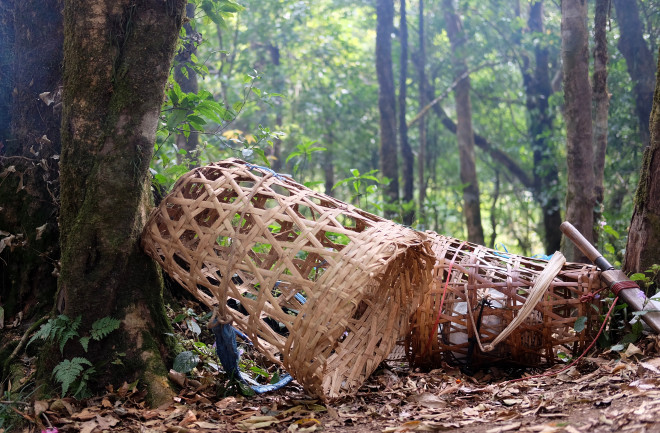There isn't a corner of the globe where you can't find people living. Even in some of the most extreme environments on the planet, people manage to get by, largely thanks to the innovations of technology.
It's easy to take these technological innovations — which have facilitated our dispersal throughout the world — for granted. In fact, common items like baskets, bags, pottery, and woven string were once considered innovative, even though they might seem humble compared to the technologies being developed today.
Still, the deeper we dig into the evolutionary origins of technology like baskets, the more archaeologists are learning about how important those household items were to our success and species.
Why Were Baskets So Important to Human Evolution
The survival advantage that a basket or bag could bring to our ancient human ancestors should not be understated. Archeological evidence suggests that we've been using these mobile carrying containers for tens of thousands of years.
In short, by increasing their carrying capacity, ancient human individuals could take fashioned tools, preserved food, clothing, and other items on large journeys in search of food or better living conditions. All of a sudden, a community on the move doesn't have to start from scratch when it has to move to a new location.
Read More: Discovering Our Roots: An Introduction to the History of Human Evolution
The Difficulty of Studying Ancient Baskets
The trouble for archaeologists interested in the emergence and development of these containers is that they were often constructed out of organic materials — materials that are prone to decomposition over time.
"Organic materials are perishable and they disappear in most archaeological contexts; that is why traditional archaeology has been focused basically on non-perishable materials such as lithic and pottery," says Maria Herrero-Otal, an archaeobotanist from the University of Barcelona.
However, in some unique conditions, such as dehydration, carbonisation, or waterlogging, organic materials can be preserved, and archaeobotanists like Herrero-Otal can extract important information about the role these objects might have played in past human groups.
Read More: From Ruins to Ancient Farming, Lidar Technology Helps Reveal Ancient Societies
Are Scientists Still Discovering Ancient Baskets?
Today, scientists are continuing to dig up ancient baskets that have managed to withstand the ravages of time.
Recently, Herrero-Otal co-authored a paper which analyzed a set of well-preserved fiber-based materials found at an archaeological site — Cueva de los Murciélagos (Albuñol)— in the Iberian Peninsula in Europe. The materials represent the earliest known use of basketry in southern Europe, likely used by early Hunter-gatherer settlers in this area. Materials from this site have been dated from between 7,986 and 7,391 B.C.E and between 4,373 and 3,740 B.C.E, respectively.
"The materials studied in this paper date back before the appearance of pottery production," says Herrero-Otal, "which means that the first containers present in human groups were made using vegetal fibers which may be involved in transporting and storing functions, or even used as sepulchral goods."
What's more, the use of baskets would have likely helped these early groups of humans in a host of daily activities.
"We do not know when the use of fibers appeared, but we know that they were used at least 9500 years ago, [and] the experience in their production shows they were used probably since some generations before," adds Herrero-Otal.
This particular archaeological site was able to preserve these items because they were embedded in a cave, where they were sheltered from weather and other corrosive factors. The preservation at the site meant several categories of organic materials were found, including cords (both twisted and braided), two different types of sandals, and wooden objects (a hammer, pointed sticks, handles, and a spoon) made from different species of wood. Herrero-Otal says the specific use of these objects is still being studied.
Read More: Ancient Shoes: Tracks On A South African Beach Offer Oldest Evidence Yet Of Human Footwear
What Can We Learn from Ancient Baskets and Household Items Today?
While these objects may seem trivial to us today, the advantages these pieces of technology would have brought to the groups that used them would have been significant. Footwear would have allowed individuals to move across new, unfamiliar terrain, protecting their feet from damage. Beyond that, braids and cords would have had a number of functions, with some possibly being used to hang and preserve food.
However, early humans' ability to bring these pieces of technology with them would have meant they were equipped to move and settle in new regions not only in southern Europe, but right across the globe.
Bags, baskets, and other common household items that we use to this day represent some of the first technology humans created to deal with the survival challenges of the world.
Read More: How Did Ancient People Keep Their Food From Rotting?

